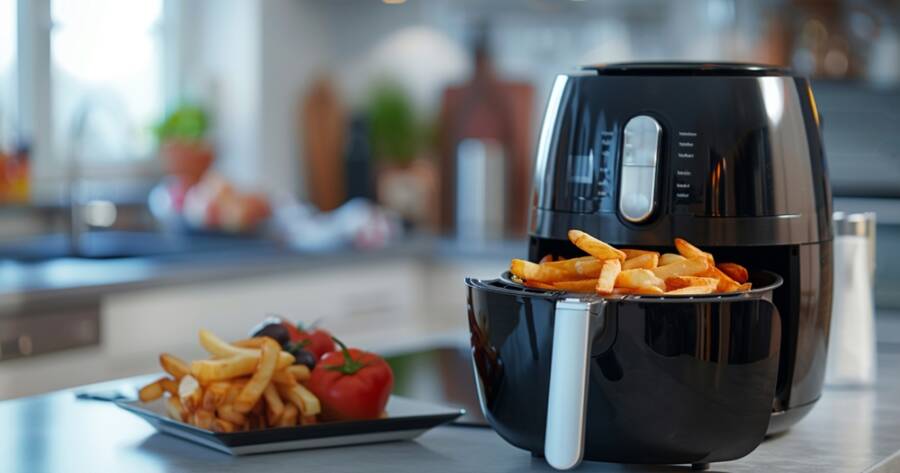If you’ve spent any time in the kitchen lately, you’ve probably heard the buzz about air fryers. These compact countertop appliances promise crispy results with less oil, faster cook times, and easier cleanup. But how does air frying really compare to traditional baking? And when should you use one over the other?
Explore the differences between air frying and baking, and decide which method is best for your favorite meals.
How Each Method Works
Air Frying
Despite the name, air fryers don’t actually fry food in oil. Instead, they work like mini convection ovens. A heating element warms the air inside the chamber, while a powerful fan circulates that hot air around the food. This rapid circulation creates a crisp, browned exterior—similar to frying—but without the need for deep oil immersion.
Baking
Baking uses dry heat in an enclosed oven to cook food slowly and evenly. Standard ovens can be either conventional (where heat comes from a top or bottom element) or convection (which includes a fan for better air circulation). Baking is often used for bread, pastries, casseroles, and other dishes where gradual cooking is important.
Key Differences to Know
1. Cooking Time
Air fryers are generally much faster. Their smaller size and intense airflow help reduce cooking time by up to 25% compared to baking. For example, frozen French fries that take 25 minutes to bake might take just 15 in an air fryer.
2. Texture and Crispiness
Air frying is excellent for achieving a crispy texture without using a lot of oil. Foods like chicken wings, tofu cubes, or breaded vegetables turn out golden and crunchy. Baking, on the other hand, produces a drier heat that’s better suited to slow-cooked meals or baked goods like muffins and lasagna.
3. Oil Usage
Air frying typically requires little to no added oil—just a light spritz is enough for many recipes. Baking may also use minimal oil, but certain dishes (like roasted vegetables) often call for more to get that browned, caramelized finish.
4. Capacity and Batch Size
Standard ovens have a much larger cooking area, which is ideal for family-sized meals or baking multiple trays at once. Air fryers have a smaller basket, which may require you to cook in batches—especially for bigger items like chicken breasts or homemade snacks.
5. Cleanup and Convenience
Air fryers are usually easier to clean thanks to their removable baskets and nonstick surfaces. Baking pans and oven racks can be a bit more work, especially after roasting something greasy or sugary.
When to Use Each Method
Use an air fryer when you want to:
-
Cook small batches quickly
-
Reheat leftovers (they stay crispy!)
-
Make healthier versions of fried foods
-
Get a crunchy texture with less oil
Use the oven for:
-
Baking cakes, cookies, or bread
-
Cooking larger meals for a crowd
-
Slow-roasting meats or vegetables
-
Dishes that require even, consistent heat over time
Can You Bake in an Air Fryer?
Yes—many air fryers can handle baked goods like cupcakes, cookies, and even small loaves of bread. However, results can vary due to the compact size and stronger airflow. If you’re experimenting with baking in an air fryer, reduce the oven temperature in your recipe by about 25°F and check for doneness a little earlier than usual.
Which One Is Healthier?
Both air frying and baking are healthier than deep-frying since they require less oil and produce fewer calories per serving. Air fryers shine when you’re craving crispy, indulgent textures without the added fat. But for naturally oil-free cooking (like steamed fish or veggie bakes), baking can be just as wholesome.
The healthiest option depends on the recipe and how much oil, salt, or sugar you add—not just the appliance you use.
The Bottom Line
Air frying and baking each have their strengths, and neither is strictly better than the other. If you love quick, crispy meals with minimal oil and cleanup, an air fryer is a great addition to your kitchen. But for large-batch cooking and traditional baked goods, your oven is still the go-to.
For many home cooks, using both methods in tandem offers the best of both worlds. So whether you’re roasting veggies or crisping up frozen snacks, now you know which tool to grab—and why it works.

